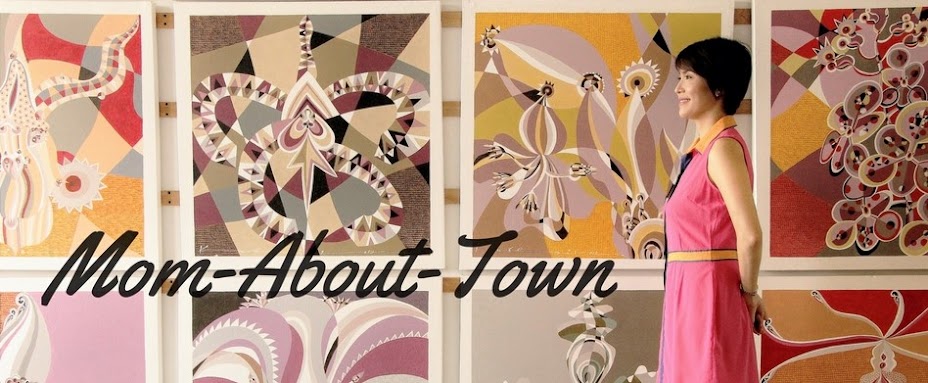“The legacy of Juna”
Sun.Star Davao, July 9, 2016
A grand family reunion was recently held by the heirs of
Francisco Villa-Abrille to celebrate the lasting legacy of their beloved
forefather.
June
28, 2016 marked the centennial or 100th year of the Original
Certificate of Title (OCT) 5609 which was registered in the name of Francisco
Villa-Abrille Juna in the Province of Davao on the 28th of June
1916. The said title covering 603.70 hectares of land in Davao was issued by
the then government of the United States by virtue of Decree No. 21484.
Being
a fifth generation descendant of Juna and the great granddaughter of Luisa V.A.
Huang, I was truly honored to share the fascinating history of my great great
grandfather during the reunion at The Marco Polo grand ballroom. My presentation
was based on the article of Malou V.A. Abella-Lopez from the “Hijos de Davao”
coffee table book.
Great
adventurer
“In
1862, Juna, an orphan with neither brother nor sister, boarded a junk from Tang
Sua, Fookien, Southern China to the Philippines.
From
Manila, he eventually found his way to Jolo where he became a successful pearl
diver and trader. He married Tan Sipo, of Chinese-Muslim lineage from Pollok,
Cotabato, and was baptized into Islam in Jolo.
Juna
arrived in Davao with Tan Sipo in 1882. They were among only 20 Chinese
families then. They settled with the Tausugs in the Piapi area where he set up
a small store. The family would later move to Claveria Street with a bigger
general merchandise store where he sold fishing paraphernalia, beans, corn,
rice, tobacco and abaca.
Juna was referred to by
different names, among them Juan Padda and Lim Chuan Juna.
At
40, Juna and Tan Sipo, 29, married anew in Catholic rites at the San Pedro
Parish in 1890. They were given Christian names: Francisco and Maria Loreto
Villa-Abrille, after the Spanish Governor General in Davao, Faustino
Villa-Abrille. The couple had five children: Ricardo, Carlos, Luisa, Cesareo,
and Candelaria. (Author’s note: At the reunion, the descendants of Ricardo wore
purple; Carlos, blue; Luisa, green; Cesareo, red; and Candelaria, white).
Juna
spoke fluent Spanish and his ability to speak the lumad Bagobo and Mandaya
dialects earned him respect. By 1929, of the 20 Chinese pioneers, Juna was the
only who remained.
Generous
heart
To
his grandchildren, he was Ingcong, and Maria Loreto was Amah. His grandchildren
still recall how Ingcong kept his precious pearls in a sack; how they were made
to choose fine cloth before these were sold in the store; and how they never
ran out of rice, sugar, and food. He was known to give away goods for free when
he deemed that the buyer didn’t have enough to pay.
Juna became a reluctant
landowner towards the end of the 19th century, when a Spaniard forced him to
buy a 600-hectare tract of wilderness for PhP2,000 across Davao River (Matina
Area) because the Spaniards were already fleeing Mindanao.
By
virtue of the Treaty of Paris in 1898, Juna became a Filipino citizen at 48
years old. Juna would also own some 30 hectares of land in Davao’s poblacion
and another 121 hectares in the town of Sta. Cruz. By 1904, Juna was one of the
big abaca planters in Davao.
He would later donate parcels to
accelerate the development of the municipio of Davao of the undivided Davao
province: the land of the Post Office, the Boy Scouts and Girl Scouts Office,
the General Hospital, the Chinese School, and the Puericulture Center, and the
roads of what was then Jones Circle, and portions of Uyanguren Street, Tomas
Claudio Extension, and Acacia Road.
By World War II, the 600-hectare
tract was already a composite of abaca and coconut plantations and a cattle
ranch. But, these were taken over by the Japanese. His big family fled in
separate groups to as far as Tugbok.
He
died at 93 years old in 1943.”
Juna’s
legacy
“His
four surviving children (Ricardo died ahead of Juna in 1925) worked to recover
the family properties after the Japanese occupation.
Davao’s
first residential subdivision, the 100-hectare Juna subdivision, was
established in 1952.
The 20-hectare Davao
City Golf Club, Davao’s first, was set up in 1954.
Juna’s heirs have various
residential and commercial developments in Davao.
Like
their forefather, they continued to donate lands for the advancement of the
city which included portions of what are now Guerrero St., Sta. Ana Avenue,
Juan de la Cruz Street, Jacinto Street, MacArthur Highway, Candelaria Street,
Maa Road, Quimpo Boulevard, and Tulip Drive, and a proposed park along
MacArthur Highway. His children also donated a portion of Philippine Women’s
College of Davao property in Juna Subdivision.”
Dabawenyo
at heart
In
1969, Juna’s philanthropic contributions earned him the distinction of being
one of the first Datu Bago awardees (posthumous), the highest honor ever
bestowed to a son of Davao. A downtown
street (Villa-Abrille) was also named after him.
Though not Davao-born, Juna took
great pride in being a Dabawenyo and encouraged his children to do their share
in the growth and progress of the city.
To continue his legacy of
helping Davao develop as Mindanao’s premier city, his heirs have also sponsored
the Chinatown Friendship Archway along R. Magsaysay Ave., one of the four
archways that frames Davao’s 42-hectare Chinatown.
“As we celebrate the centennial
of OCT 5609, we, the descendants of Francisco & Maria Loreto Villa-Abrille,
commit ourselves to their legacy of hard work, humility and generosity.” We
hope to make our forefathers proud by doing our share to be good and productive
citizens of Davao and being a significant part of its development.
E-mail the author at
mom.about.town.dvo@gmail.com. Visit www.momabouttowndavao.blogspot.com.


